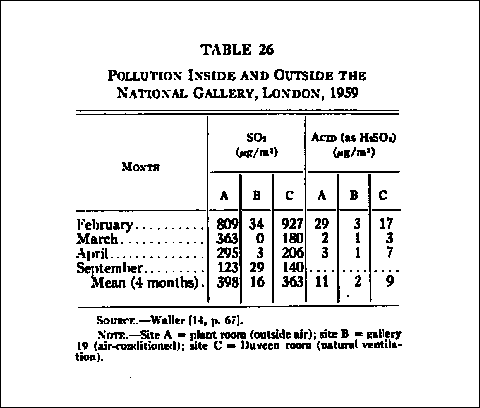

Learn More about Preservation

| Cohasco DPC Home. |
| DPC Home. |
 |
 Learn More about Preservation |
 |
|
·About Preservation
Time alone is not a threat to document preservation. ·Preserving Photographs
The matter of preservation of photographic images of various kinds, from cartes to modern Polaroids, has been one of the most neglected areas by all but the research community.
DPC Casebook The general conception of document preservation is one of preventing, rather, deferring, the aging process. The net result of one's efforts at preserving a particular item or collection will hinge on a sum total of many factors, which to the chemist or professional archivist are each seen as fine minutae...how to balance always-different conditions of air purity, chemical pollution, temperature, and more, to create an ideal environmental for the antiquities under consideration, at the lowest possible cost. Time to the preservationist is often thought of in sweeps of years, decades, indeed millennia (witness the recently unearthed archive of Syrian cuneiforms or the paper document dating from the year 1501, both still in serviceable condition). While you have thought of preserving your collection in like manner, for a period of many years, how will it survive the swiftest thief of all: fire - and fire's allied conditions of water damage (lightens ink, dilutes photographic images, warps bindings), heat (embrittles paper and objects of all kinds, singes documents), and smoke (infiltrates paper fibers)? Fire strikes a home, business, or institution every 43 seconds in the United States,2 and while it can be argued that the forces of document deterioration strike constantly, without remission (because of the constant presence of pollution and aging-promoting conditions), it must be noted that a collector can make the decision to upgrade his or her preservation supplies and systems at any time; considering the age of most documents under consideration, one week, realistically, is as good as another to buy your supplies. However, you cannot buy fire protective supplies once the fire has started! And fire can strike quickly. Ignition of paper can occur in a microsecond. And even in cases where the fire is not major, the damage concomitantly done by firefighters is often as great or greater than that wrought by the fire itself. Firefighters do not have the advantage of time to examine each item in a room that is ablaze in order to determine how much water, foam, or oxygen suppressant to spray on it. Furthermore, cartons, cabinets and other places where a collection might be stored must necessarily be roughly handled in the course of fighting a fire. That's why a reliable safe is an intelligent choice for the concerned collector or archive manager. If you presently have a safe, make certain that it meets U.L. standards; many of the older safes are impressively machined, but lack the state-of-the-art fire-resistant features of current models. Many of these older safes actually act as metal furnaces, allowing their contents to catch fire inside. This has been called the "cooking effect." The National Fire Protection Association advises records administrators and curators: "Perhaps the greatest handicap of the movement to protect records from fire is the lack of appreciation by the average owner or custodian of records of the serious consequences...No one individual experiences...the serious effects of such losses more than a few times at most in a lifetime. Some persons may never have first-hand information of such a disaster. This results in an unwarranted sense of security...The individual who has lost valuable records realizes the importance of the subject of protection too late...It is, therefore, only elementary prudence to provide adequate protection for one's records even though it is hoped and expected that they will never be lost from fire...A burned building can be replaced, even though there has been a real loss of wealth. But, if a record of which there is no copy extant is burned, it is gone forever...."3 1In the Collections of the British Museum, this is perhaps the most ancient paper document known. (Other manuscripts of such antiquity are customarily on skins.) 21977 statistic; incidence probably more frequent at this writing. 3From Protection of Records, Boston: 1975, Monograph (Standard) #232, pp. 50, 51.
DPC Casebook
Perhaps one of the least articulated principles concerning almost all documents, books, and allied antiquarian materials, is that they are organic. Since paper items and books are composed of cellulosic material, bound in animal skins, and may contain such imperfect ingredients as used rags, old rope, wood, and waste-paper pulp, their chemical
and physical structures are inclined, with the slightest encouragement from environmental conditions, to change for the worse. Standard Table of "pH" Values
Showing relative Acidity or Basicity of pH Values A pH value of 7.0 is considered neutral, i.e., neither acid nor base. Note, however, that a pH of 4, which has been estimated to be the average pH of a standard stationers' storage folder, is one thousand times as acidic as a pH of 7.0!
0 ........................................................ 10,000,000
1 ........................................................ 1,000,000 2 ........................................................ 100,000 3 ........................................................ 10,000 4 ........................................................ 1,000 5 ........................................................ 100 6 ........................................................ 10 7 (Neutral) .............................................. 1 8 ........................................................ 10 9 ........................................................ 100 10 ...................................................... 1,000 11 ...................................................... 10,000 12 ...................................................... 100,000 13 ...................................................... 1,000,000 14 ...................................................... 10,000,000 It is now general consensus that a mildly alkaline pH is best. But apparently this conclusion was first reached, not in a modern laboratory, but in the ancient world of the pharaohs. In the early nineteenth century, the shortage of paper fibers was such that several shiploads of mummies were imported from Egypt. The fibers in the "bandages" were found to be in good condition after as long as 3,000 years, despite conditions of 70-100% relative humidity. (Such conditions are a preservationist's nightmare, as the high moisture content in the air accelerates breakdown of paper.) The reason for the successful "preservation" job? The mummies' wrappings contained a mildly alkaline additive, comprised of natural baking soda, which helped buffer the fibers against environmental forces, which, as previously mentioned, generally want to destabilize the paper -- to "recycle it," in a broad sense. pH values can be misleading. The concept of "acid-free" must be viewed in a complete framework of all environmental impactors. It has been reported that Coca Cola has a pH close to that of battery acid -- 2.0! A glance at our pH chart shows that this is 100,000 times more acidic than the neutral center point of 7.0. Yet the two materials have very different effects (fortunately) on the organic recipient, in this case the human body. Similarly, a collection of old envelopes, which may have a high content of wood-flour, which promotes decay, may seem fine in one town, while a collection of colonial documents, which have an enduring rag content, can age and break at the folds in another geographical area. In other words, acid-free storage products by themselves are not a complete guarantee of preservation. It is necessary to take into consideration all other factors as well. In the context of a discussion of cellulose acetate mounts (which is not believed to be a "culprit" material), the world's foremost philatelic writer and authority on stamps, Herman Herst, Jr., has written: "There is no question but that each stamp neatly mounted in a shiny acetate mount with black background looked better than one hinged to an album page. Within a few years, dozens of different companies came on the market with their products. Many were entirely untested, and in a short time the stamps they were supposed to protect were ruined. On some the gum became glistening and shiny; on others the fine engraved lines softened, doubled and finally the stamp itself became a solid blob of color with an indistinguishable design."2 Improper storage materials, being organic themselves with few exceptions, can be susceptible to biological attack. In some cases, the improper material can introduce decay into the collection where that particular type of decay might otherwise not have occurred. For example, vinyl plastics, which are widely misused for document preservation, have been observed to take on a pink stain over a period of time. This is due to a species of the streptomyces fungus, which produces a pinkish-red dye, infiltrates into the plastic, and then attacks the item that is being "preserved." "It is perfectly safe to say that every library in the world is liberally seeded with perhaps hundreds of genera and species of fungi..."3 A report issued by the United States Naval Ordnance Laboratory on the Corrosivities of Plastics and Rubber4 admonished concerned parties on the use of certain commonly-used plastics because yeast and bacteria ferment the plastic, bringing about release of acetic, formic, and carbonic acids. At the time of the report, numerous plastics sold commercially to collectors were found to emit by-products and vapors so strong that coinage metals including steel were corroded! A key organic component in both documents and storage materials is cellulose, which occurs naturally in plants. Unfortunately, cellulosic materials have a great affinity for moisture. Improper storage materials and conditions can encourage fungi, algae, protozoa, and other organisms to regard your collection as a source of nutrition. Many collectors are unaware that "foxing" is a symptom of such biological attack on documents. Another important factor in preservation is the quality of air. The chart5 below shows how air conditioning in London's National Gallery dramatically reduced the number of micrograms per cubic meter of air of sulfur dioxide and of sulfuric acid, two of the most active, dangerous acids found in nearly every town and city in the industrialized world. (Even farm and wilderness areas are not exempt, witness the problem of acid rain.) Sulfuric acid can remove skin almost instantly; in the eyes, it can blind. These sulfur compounds can affect almost anything produced after about 1750; interestingly, parchments, vellums, and documents made before that time did not usually have the metallic coating which interacts with the sulfur, creating the damaging chemical reaction. Sulfur dioxide lowers the local pH of the document or leather binding to a value of 3! Notice in the chart how the air conditioning totally eliminated SO2 in one instance.  The kinds of document deterioration are as numerous as the causes themselves. What matters is that the collector and archive manager be aware that documents, like all other objects of art and antiquities, interact with their environments in a definite cause-effect fashion; if storage conditions are deficient and are left that way, the collection will suffer. The damage may be cosmetic, it may be financial. Or it can ultimately be a total loss. The Curator of Photographs at the Smithsonian Institution has stated, "Simply by inspecting 'items], you cannot tell whether they contain harmful chemicals that are attacking 'them]...inspection is often deceptive; it is usually impossible to detect degeneration...." While there are methods of document preservation that bypass virtually all of the hazards discussed in this section of DPC Casebook (storage vaults in Antarctica is one such method; chemical reactions in paper absorb energy; in the frozen, still polar world there is so little energy that the documents would become virtually inert), the idea is not to bury our collections in an ice mountain but to enjoy them. It is with this in mind that we have presented our DPC line of products for preservation and collecting. Good luck. Robert H. Snyder 1"Preservation by Restoration of Documents," Part I, by Bernard G. Barrow, Salt Lake City. 2Herst's Outbursts, Spring 1973, p. 4. 3"Environmental Facts Affecting the Permanence of Library Materials" by Carl J. Wessel. From Proceedings of the 34th Annual Conference of the Graduate Library School, University of Chicago, Aug. 4-6, 1969. 4NAVORD Report 6036, January 8, 1958. 5Originally from R.E. Waller, "Studies on the Nature of Urban Air Pollution." In Museum Climatology, G. Thomson, ed. London: International Institute of Conservation, 1967. All material is copyrighted, and may only be quoted with written permission and credit. |
Established 1946
P.O. Drawer 821
Yonkers, NY 10702
| DPC Home. |
| Cohasco DPC Home. |